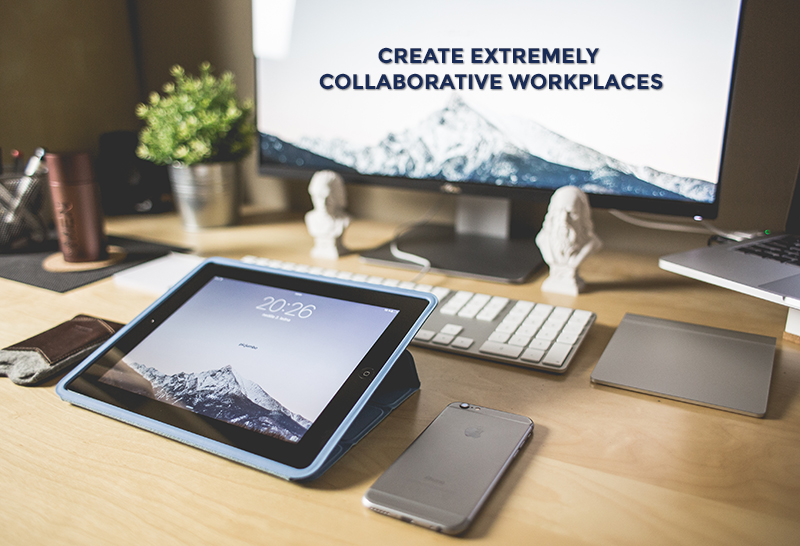These days, companies are looking to do more with less by moving towards unified communications solutions.
The goal is to succeed in making voice, video and online communications all work together to promote collaboration.
Imagine your business based on a solution that is intuitive, looks great and designed to speed up performance. New social collaboration tools that offer enhanced mobility, are truly specific to the industry and have an easy-to-use interface functionality deliver modern solutions and allow you to innovate and remain competitive in a challenging business landscape.
How generations X, Y and Z imagine their ideal work space
Naturally, collaborative spaces foster innovation and growth that are conducive to the exchange of ideas.
But how can we design a work environment that strongly stimulates collaboration and reflects everyone’s expectations? According to the Cisco® report “Connected World Technology” from 2014, the work space follows five main trends:
- Flexibility and synergy
- Personalisation of space
- Wellness
- Sustainability
- Programs BYOD
According to the report, approximately two-thirds of the professionals of generations X and Y along with HR managers think that a company that has been able to adopt a model of flexible, mobile and remote work enjoys a competitive advantage over companies that instead always require their employees to be present on their premises during working hours.
Designing the work space of tomorrow
The time has come to reinvent collaboration and boost your results.
The work of the future is largely subject to speculation. However, it is clear that collaboration technology is closely linked to many of the factors that will define the work space of the future:
- Permanent Connection: Employees of today and tomorrow will always be able to stay connected via mobile and portable equipment by using enriched applications for accessing social networks and cooperation.
- Faster Decisions: Employees will take advantage of ubiquitous networks, devices and intelligent systems as well as forward-looking analysis and real-time collaboration to get better information and make decisions quicker.
- Decentralized Teams: Real and virtual work spaces will continue to merge with the progress of collaboration technology. Mobile employees as teleworkers can remain effective regardless of their location.
- Custom Productivity: A new wave of connected and mobile devices, access to social networks and contextual systems will provide information to companies as consumers personalise their productivity applications and environments.
- Security Challenges: A collaboration between employees, partners and customers will go hand-in-hand with increases in concerns about data security.
Taking these key factors into account, companies can transform their work spaces and:
- better attract, satisfy and retain the most talented professionals, regardless of their age and region.
- further reduce real estate costs, greenhouse gas emissions and employee travel.
- create more areas of modular work as business needs evolve.
- better help employees maintain a balance between their private and professional lives by offering them the freedom to work from the location of their choice.
- encourage collaboration by breaking barriers, sharing ideas and accelerating decision making and innovation.



